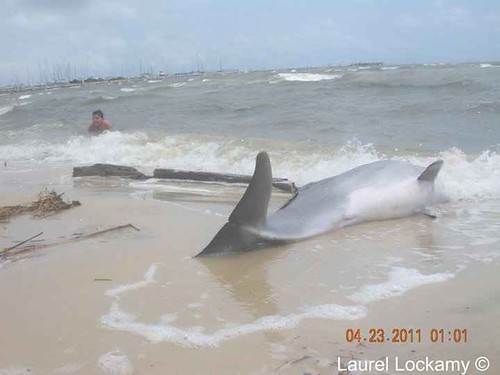
Dead dolphin on Mississippi Beach in 2011 Photo: Laurel Lockamy
Since BP’s catastrophic oil blowout nearly two years ago, Laurel Lockamy has gotten pretty good at photographing the dead. She’s snapped images of dozens of lifeless turtles and dolphins, countless dead fish, birds, armadillos and nutria and pretty much anything that crawls, swims or flies near the white sandy Mississippi beaches of her Gulfport home.